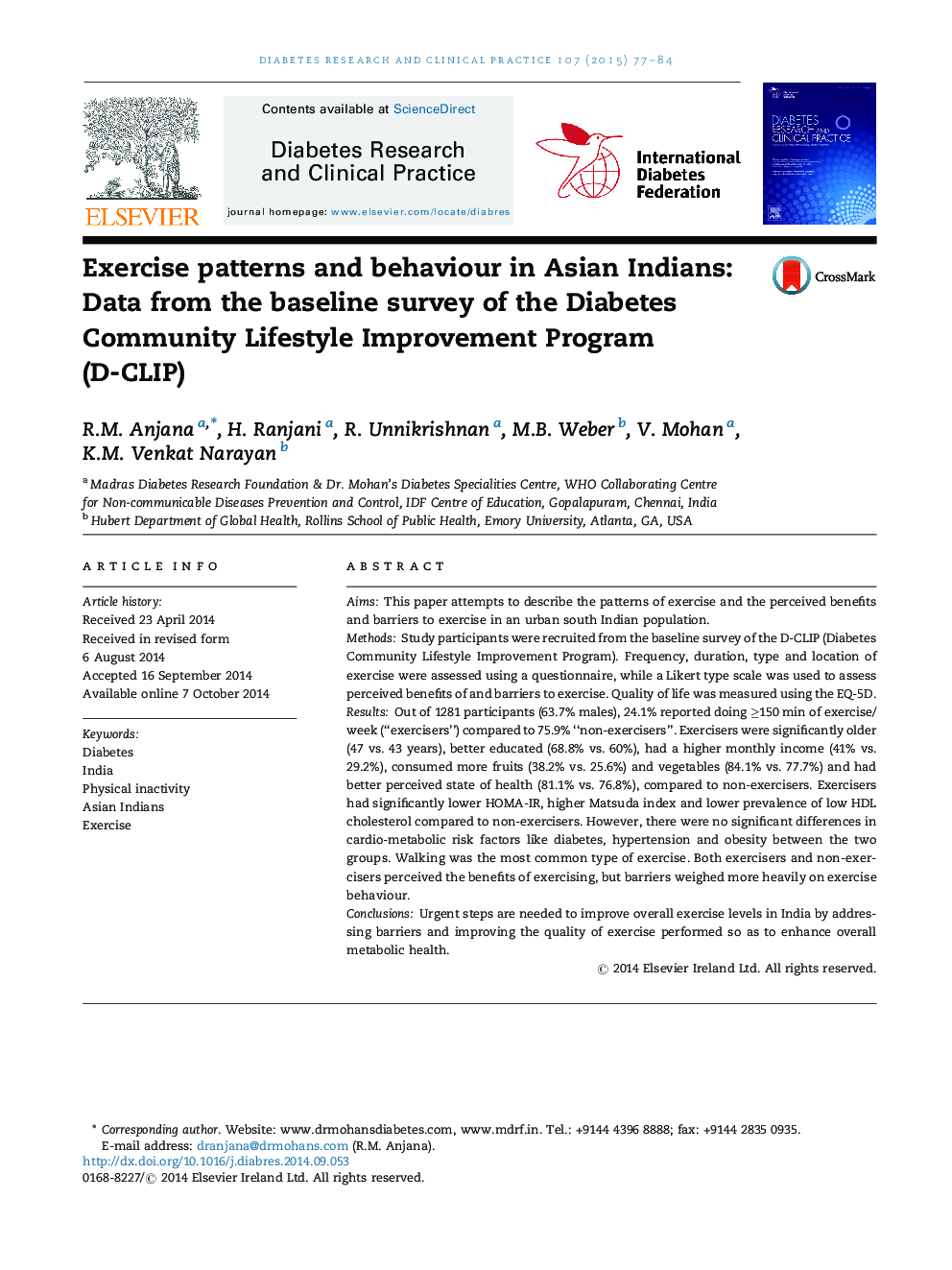| Article ID | Journal | Published Year | Pages | File Type |
|---|---|---|---|---|
| 5899176 | Diabetes Research and Clinical Practice | 2015 | 8 Pages |
AimsThis paper attempts to describe the patterns of exercise and the perceived benefits and barriers to exercise in an urban south Indian population.MethodsStudy participants were recruited from the baseline survey of the D-CLIP (Diabetes Community Lifestyle Improvement Program). Frequency, duration, type and location of exercise were assessed using a questionnaire, while a Likert type scale was used to assess perceived benefits of and barriers to exercise. Quality of life was measured using the EQ-5D.ResultsOut of 1281 participants (63.7% males), 24.1% reported doing â¥150 min of exercise/week (“exercisers”) compared to 75.9% “non-exercisers”. Exercisers were significantly older (47 vs. 43 years), better educated (68.8% vs. 60%), had a higher monthly income (41% vs. 29.2%), consumed more fruits (38.2% vs. 25.6%) and vegetables (84.1% vs. 77.7%) and had better perceived state of health (81.1% vs. 76.8%), compared to non-exercisers. Exercisers had significantly lower HOMA-IR, higher Matsuda index and lower prevalence of low HDL cholesterol compared to non-exercisers. However, there were no significant differences in cardio-metabolic risk factors like diabetes, hypertension and obesity between the two groups. Walking was the most common type of exercise. Both exercisers and non-exercisers perceived the benefits of exercising, but barriers weighed more heavily on exercise behaviour.ConclusionsUrgent steps are needed to improve overall exercise levels in India by addressing barriers and improving the quality of exercise performed so as to enhance overall metabolic health.
